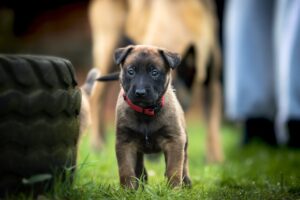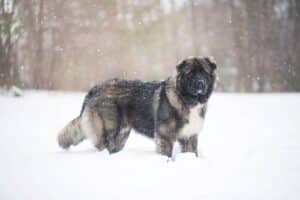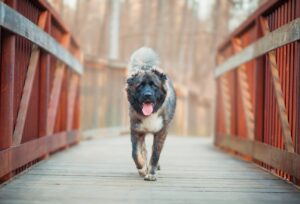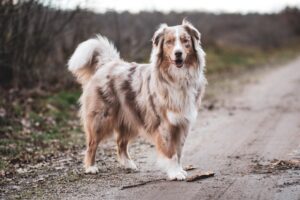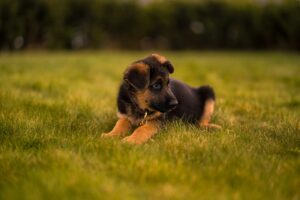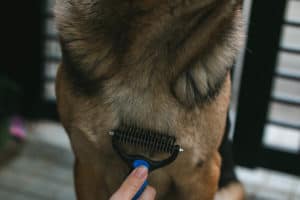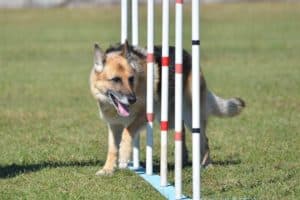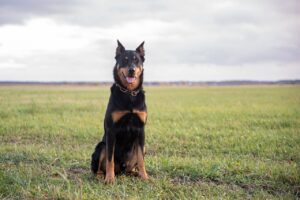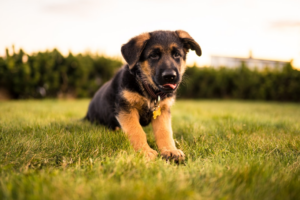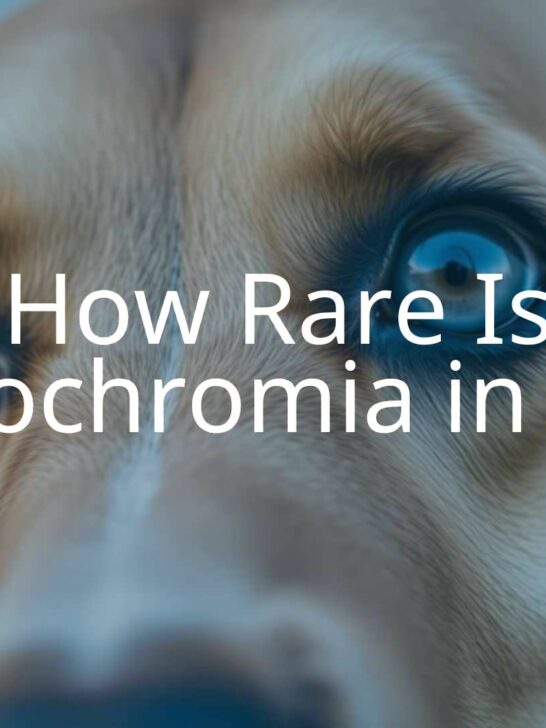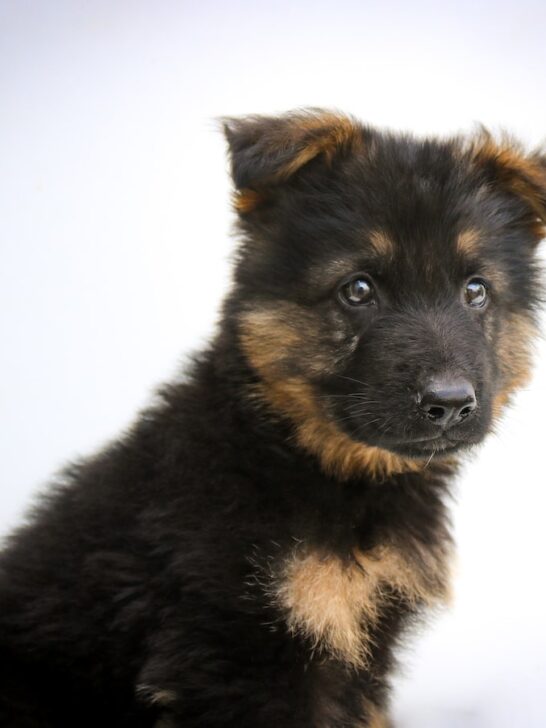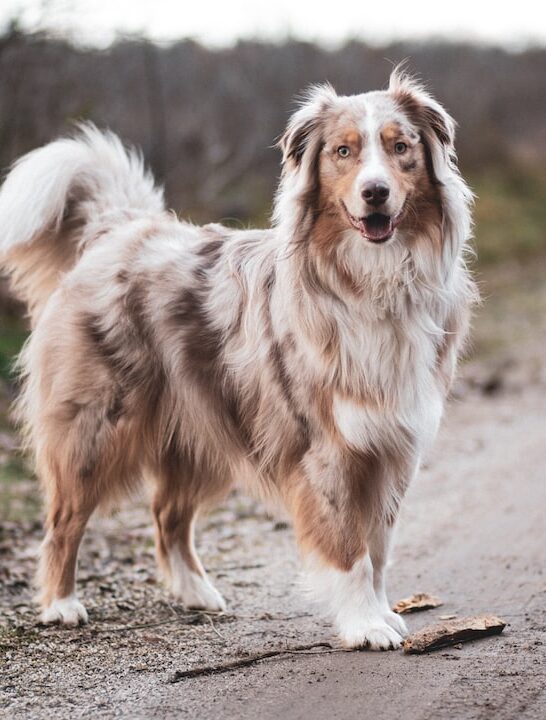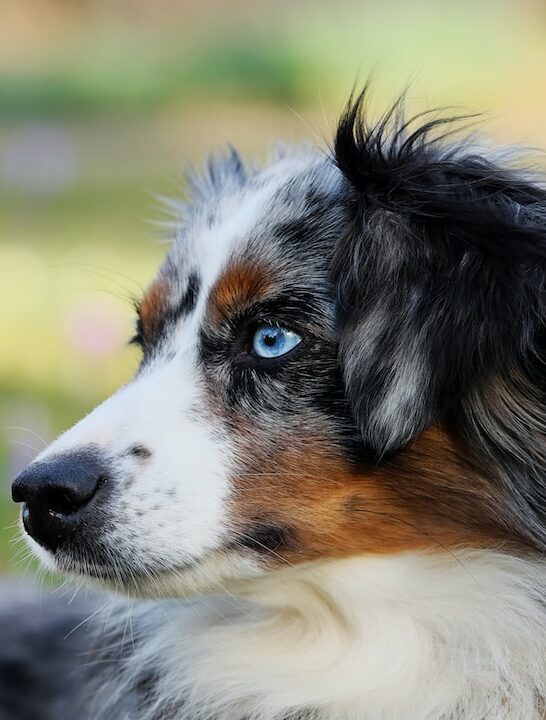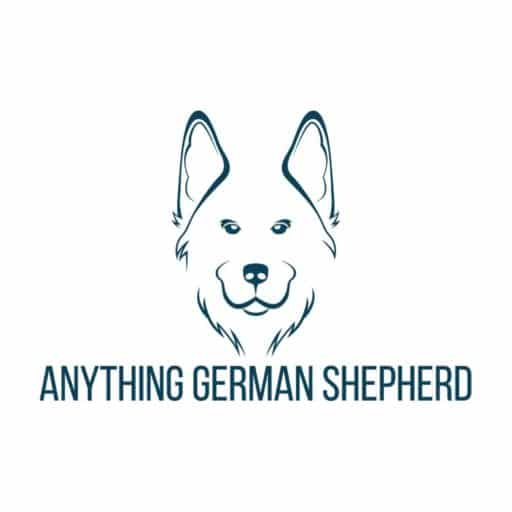DDR German Shepherd: Everything You Need to Know
DDR German Shepherd: Origins, Characteristics, and Care
A DDR German Shepherd is a special line of the German Shepherd breed, carefully developed in East Germany (the German Democratic Republic) from 1949 to 1990. The East German government set up very strict, controlled programs to breed these dogs for police and military work. Because of this, DDR German Shepherds have their own look, with strong bodies, steady personalities, and great working ability that makes them different from other German Shepherds.
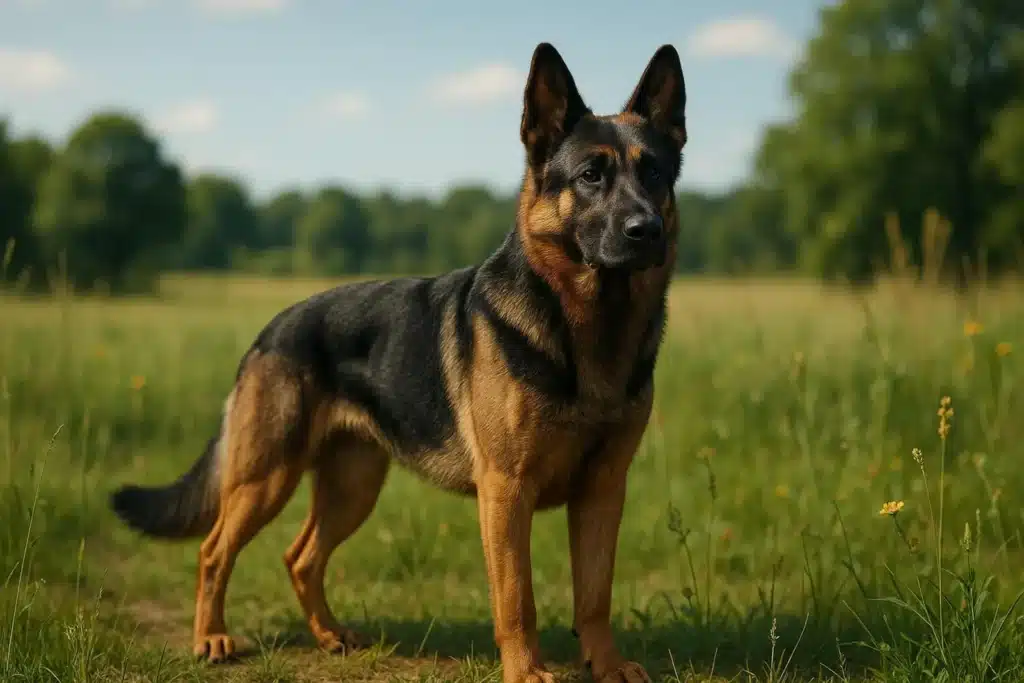
What Is a DDR German Shepherd?
When people say “DDR German Shepherd,” they mean a branch of German Shepherds originally bred in East Germany (Deutsche Demokratische Republik, DDR). This type of German Shepherd was shaped during the Cold War by programs that focused on creating tough, smart, and reliable working dogs. This resulted in dogs that are known for their strength, sharp minds, and willingness to work-qualities not always found in other lines of German Shepherds.
The Meaoning of DDR in DDR German Shepherd
DDR stands for “Deutsche Demokratische Republik,” the German name for East Germany. This term points to the specific place and time these dogs were bred. For around 40 years-from 1949 to 1990-DDR German Shepherds were only bred in East Germany under strict control, giving them a special background and unique qualities.
Origins in East Germany (GDR/Deutsche Demokratische Republik)
The DDR German Shepherd story begins after World War II, when Germany was split into East and West in 1949. East Germany was under Soviet influence, with closed borders and strong government regulation. Dogs were bred mainly for jobs in security and border patrol.
Police forces in East Germany needed reliable dogs, so the government created and managed a strict breeding program for German Shepherds. They bred for traits like stamina, good health, and steady nerves. This led to a line of German Shepherds that were especially good at tough jobs like tracking, guarding, and working in harsh conditions.
Key Differences from Other German Shepherd Types
Unlike some German Shepherds bred mainly for how they look (show dogs), DDR German Shepherds were bred for work. They have strong, straight backs, solid frames, heavy bones, and large heads. Their bodies are meant for hard work, rather than dog shows.
These dogs generally have dark coats, great endurance, and a lower rate of hip problems. The DDR used a special rating system called Wertmessziffer to judge each dog’s body and personality before breeding, making sure only the best dogs had puppies. This gave them a reputation for loyalty, strength, and high working drive, standing out from more show-focused German Shepherds.
Breed History and Development
The story of DDR German Shepherds is about more than dogs-it’s about life under strict rules in a divided country after World War II.
Post-World War II Breeding Programs
After 1945, East and West Germany developed differently. In the East, the government created a breeding program with tough requirements: only healthy, well-built, and mentally strong dogs could have puppies. Officials regularly checked puppies for good teeth, upright ears, strong bones, and good behavior. Dogs showing any sign of weakness or health problems were removed from the program. This created a healthy and strong line of working dogs.
Role in Border Patrol and Security
The main purpose of breeding DDR German Shepherds was to use them for East German border patrol and other security work. They helped guard over 850 miles of border, including the Berlin Wall. These dogs worked as guards, trackers, and protectors-jobs that needed intelligence, courage, and physical strength.
They were trained to handle tough jobs, like climbing tall, straight walls, searching for hidden people, and tracking in difficult situations. Their breeding and training helped them excel in harsh weather and long hours on patrol, making them dependable and tough dogs with a strong loyalty to their handlers.

Impact of the Berlin Wall and DDR Dissolution
When the Berlin Wall was built in 1961, the DDR German Shepherd program became even more cut off from the rest of the world. The lack of outside influence allowed breeders to focus intensely on useful working traits. After the Wall fell in 1989 and Germany became one country again, many DDR dogs were no longer needed. Luckily, some breeders continued these lines by bringing them to other countries, keeping their unique qualities alive today.
Physical Characteristics of DDR German Shepherds
DDR German Shepherds were bred to be strong and useful, which shows in their appearance-they are sturdy, powerful dogs made for work, not for winning beauty contests.
Size and Build
These dogs are muscular, with heavy, strong bones and a straight back. They were built to be tough and to handle hard work for long periods.
Coat Color and Texture
DDR German Shepherds often have dark, rich-colored coats. Their fur is typically dense and tough enough to protect them from bad weather. Most have a medium-length double coat, giving them insulation and durability for working outside.
Distinctive Features Compared to West German and Other Lines
The most obvious difference is their straight back and less sloped hindquarters, in contrast with the more angled bodies seen in many West German and American lines. They also have big heads, broad shoulders, and deep chests. These features add to their working ability and durability, instead of just looking pretty.
| Trait | DDR German Shepherd | Show Line German Shepherd |
|---|---|---|
| Back Structure | Straight | Sloped |
| Bone Size | Heavy | Medium-Lighter |
| Main Purpose | Working | Showing |
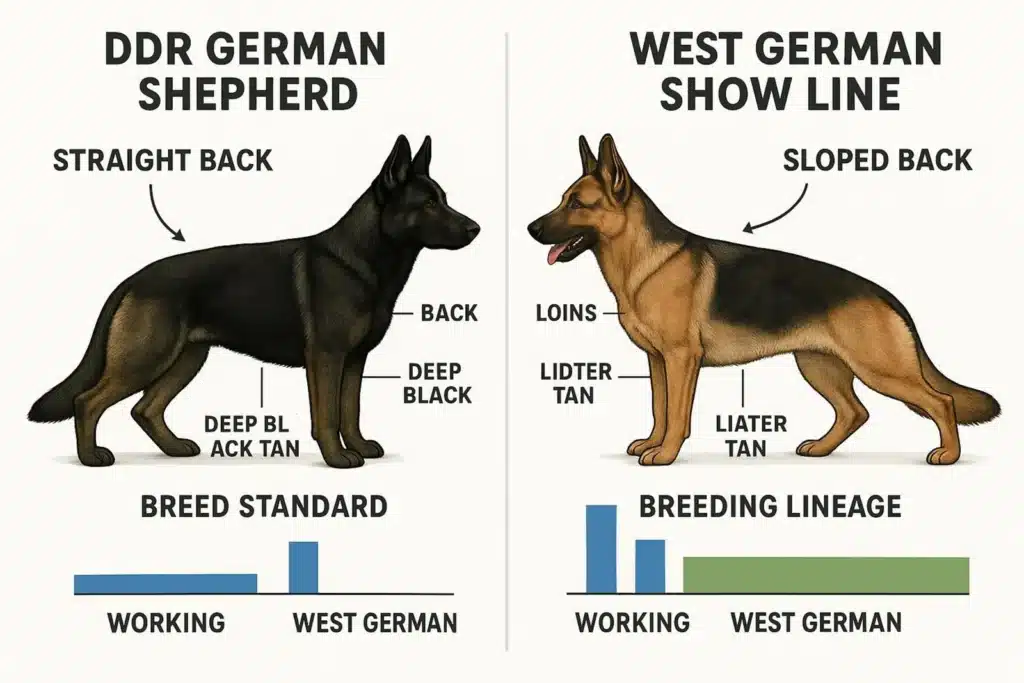
Temperament and Behavior
DDR German Shepherds are known not only for their appearance but also for their personality-they are smart, obedient, loyal, and bred for high-stress jobs.
Trainability and Intelligence
These dogs are very intelligent and quick learners. They want to work and are easy to train with the right guidance. They love tasks that challenge their minds and follow instructions well, making them great at jobs like searching and protection work.
Protective Instincts and Loyalty
DDR German Shepherds are extremely loyal and protective of their families and handlers. They were bred to guard people and places, and they often form strong bonds with those they trust. This loyalty, alongside their bravery, makes them excellent guard and family dogs, as long as they are properly socialized.
Aggression and Socialization Needs
In DDR German Shepherds, “aggression” usually means a focused drive and energy for work, not uncontrolled fear or attacking strangers for no reason. Proper socialization is a must-the more new experiences and people they meet, especially when young, the more confident and relaxed they become. Good training and early socialization help them use their natural instincts the right way and avoid fearful or reactive behavior.
Health and Lifespan
The health of DDR German Shepherds is one of their biggest strengths, thanks to the strict breeding programs in East Germany that eliminated dogs with health problems from the lines.
Common Health Issues in DDR Lines
Overall, DDR German Shepherds have fewer genetic health problems compared to other lines. The East German breeding system was very tough: only dogs with strong health and physical ability could have puppies. Dogs with health concerns were removed from the breeding program, lowering the risk of inherited issues.
Musculoskeletal Health and Hip Dysplasia
These dogs are famous for having fewer hip problems than many other German Shepherds. Only dogs with healthy hips were allowed to breed, and their straight-backed bodies further reduce joint stress. This focus on good joints helped prevent the common hip and elbow troubles seen in many modern German Shepherds.
Longevity and Quality of Life
Due to their strong genetics and careful upbringing, DDR German Shepherds usually live long, active, and healthy lives. Many owners report their DDR dogs stay fit and able even as they get older, which comes from generations of breeding for health and strength.
| Health Trait | DDR German Shepherd | Other Shepherd Lines |
|---|---|---|
| Hip Dysplasia Risk | Low | Medium-High |
| Expected Lifespan | 12+ years | 10-12 years |
How DDR German Shepherds Compare to Other German Shepherd Lines
Looking at how DDR German Shepherds differ from other types makes it easy to see their unique qualities. The split between East and West Germany led to very different breeding styles and results.
DDR versus West German Working Lines
While both DDR and West German working lines aim for strong, smart, and useful dogs, DDR types are more uniform and have straighter backs. The West German lines can be more varied, as they were bred with slightly different standards and influences. Still, both lines share focus on strength and intelligence-what sets DDR dogs apart is their toughness, straight backs, and the kind of physical build preferred by the East German breeders.
DDR versus American Show Lines
The difference is even bigger between DDR German Shepherds and American show lines. American-bred show dogs are more about looks, often with extra-sloped backs and a lighter frame, which can cause more joint issues. The behavior and drives are also different: show lines tend to be softer in nature, while DDRs remain more serious and work-focused, closer to the breed’s original purpose of herding and guarding.
Working Abilities and Roles
DDR German Shepherds were bred for hard work, and their performance in various jobs shows this. Their natural talents are best seen in roles that need strength, drive, and smart thinking.
Police and Military Use
Originally, these dogs were the top choice for police and military jobs in East Germany, especially for guarding borders and the Berlin Wall. They were used for patrol, tracking, guarding, and as attack dogs when needed. Their sturdy build and trainable nature made them perfect for these high-pressure jobs. Today, their descendants are still wanted by police forces and the military in many countries.
Search and Rescue Performance
DDR German Shepherds also excel at search and rescue work because of their great sense of smell, stamina, and ability to work in hard conditions. They can track people over long distances and in tough situations, and years of challenging working tests have made these skills even stronger.
Suitability for Protection and Sport
These dogs are great for personal and family protection, and they are popular in working sports (like IGP or Schutzhund) that test obedience, tracking, and protection skills. Their impressive drive and athletic ability makes them stand out in these activities.
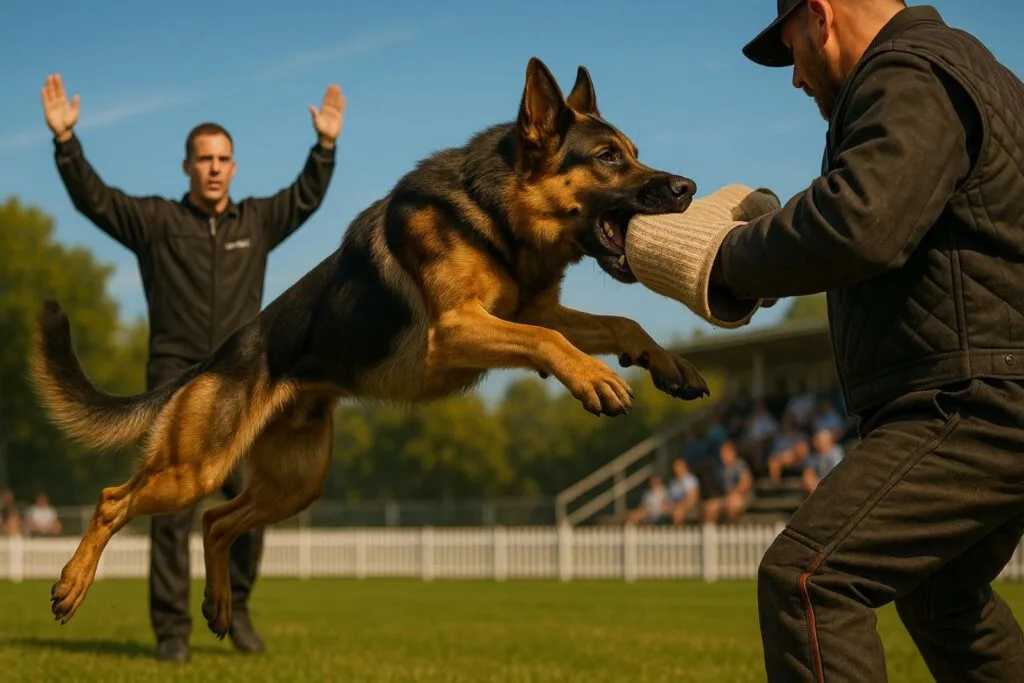
Caring for a DDR German Shepherd
DDR German Shepherds need dedicated care, exercise, and mental challenge. Owners must be ready for an active, intelligent companion.
Exercise and Mental Stimulation Requirements
These dogs have a lot of energy and need much more exercise than just a walk each day. Long walks, running, training sessions, and games are important to keep them busy and happy. Mental challenges, like learning new tricks, puzzle games, scent work, or dog sports, also help provide the stimulation they need.
Feeding Recommendations
Because DDR German Shepherds are active and muscular, they need high-quality food with plenty of protein. Choose dog food with meat listed first, and adjust the amount to your dog’s age and exercise level. If you have questions about food, ask a veterinarian. Some good brands for working dogs are Bully Max, Imperial Food, BELCANDO, and Pac Dog. Always give fresh water, and use treats sensibly.
Socialization and Training Advice
Start socializing and training a DDR German Shepherd as early as possible. Introduce the puppy to all sorts of people, places, and other animals. Puppy classes can help, as can ongoing training focused on rewards and clear leadership. DDR dogs are smart and need tasks and guidance; they respond best to owners who are calm, confident, and consistent. Professional training is especially useful for these strong-willed, energetic dogs.
Choosing a DDR German Shepherd: What to Know Before You Buy
Getting a DDR German Shepherd is a big commitment. These dogs are not for everyone-they need time, energy, and experience. Knowing how to find a real DDR dog and picking a good breeder is important.
How to Identify True DDR Bloodlines
Because the DDR ended in 1990, modern DDR German Shepherds come from dogs that go back to those lines. Check pedigrees for ancestors from East German kennels between 1949 and 1990, and look for “ZL” (Zuchtlinien) codes, which are bloodline numbers. A real DDR dog should have a straight back, large head, heavy bones, and dark coat. Double-check any breeder’s claims by reviewing documents, especially working titles like Schutzhund or IGP.
Questions to Ask Breeders
- Can you show full pedigrees with DDR lineage and bloodline numbers?
- Do the parents have health certificates, especially for hips and elbows?
- What traits do you focus on in your breeding program?
- How are puppies socialized before leaving your care?
- Can I meet the puppy’s mother or both parents?
- What support will you give me after I buy the puppy?
- Is there a contract? What does it cover (such as health guarantees)?
- What are the parents’ working or sport titles?
Good breeders will also want to know if you’re prepared for the responsibility these dogs require.
Breed-Specific Considerations for Families
DDR German Shepherds can be good family dogs, but only for families ready for the work involved. They need training, exercise, and socialization-especially if young children are in the house. Always supervise children and teach them to treat the dog respectfully. A trustworthy breeder will help match the right puppy to the right family, depending on each puppy’s temperament and drive.
DDR German Shepherds in Modern Times
The DDR German Shepherd’s legacy is kept alive by breeders and fans who value their unique working skills and strong health. While not as common as some other German Shepherd lines, they hold a special place for people who appreciate their history and abilities.
Preservation of DDR Bloodlines Today
A small but dedicated group of breeders work hard to keep DDR German Shepherd lines alive. They focus on health, solid build, and good working ability-just as in East Germany. Clubs such as the DDR Dog Club of America (DDRDCA) help keep standards high, connect breeders and owners, and provide education. The aim is not only to keep the old lines but also to keep improving health and ability for the future.
Current Popularity and Availability
While DDR German Shepherds are not as well known as some other German Shepherds, they are highly respected among people who need a tough, healthy working dog-police, military, sport competitors, and serious owners. Because the number of true DDR breeders is small, finding a pure DDR German Shepherd takes research and patience. This makes them special and sought-after by people who know their value.
Our YouTube Video On The DDR German Shepherd

